Even though I was at my house, which I would normally be thrilled to be visiting, leaving was easy. I was excited to explore the schedule of the second day. We started the experience at Dr. Consulta in Largo da Batata. Disrupting the current conditions of the healthcare sector, this private company is offering services that are accessible and high quality.
The Brazilian healthcare system is unstructured with little power given to the patient. There is no engagement, no efficiency, and no control. Not only the public sector, but also the private sector healthcare system is in crisis, which is obviously a major concern for both people and organizations. In the public sector, there is no infrastructure, quality, and capacity to meet the demand. In the private sector, their rates are mostly inaccessible to the majority of the people, and they are limited in their locations. Dr. Consulta was able to analyze existing challenges and opportunities and adapt their offer to an efficient and effective way.

As we were walking through Dr. Consulta’s Pinheiros unit, I was amazed by the solutions they presented and the sources of inspiration. The company gave control of time, process, and finances to the patient, and transferred the responsibility of follow-ups and history from the patient to the organization. They are offering great services at a very low cost, and they operate under a human-centric design framework that is trying to avoid frustration and fear of professional treatments.
The channels created for interactions are easy and quick. A patient can book an appointment online, using the call center service, or walk in. At every step of the process, the experience is transparent, reducing anxiety from the front door to the doctor’s room. Despite their innovation from analogue models (e.g. Brazilian bakery walls menus for pricing, and airplane booking and check-in procedures), it took the team two years develop such dynamic and logical system.
 Foto: André Nogueira oct/2016
Foto: André Nogueira oct/2016
After listening to their organization’s processes and business development, I was even more surprised. I could not separate my previous experiences with the Brazilian healthcare system, raising a lot of questions related to their strategies. They work in a very tight system with rigorous procedures and every employee is trained to follow them.
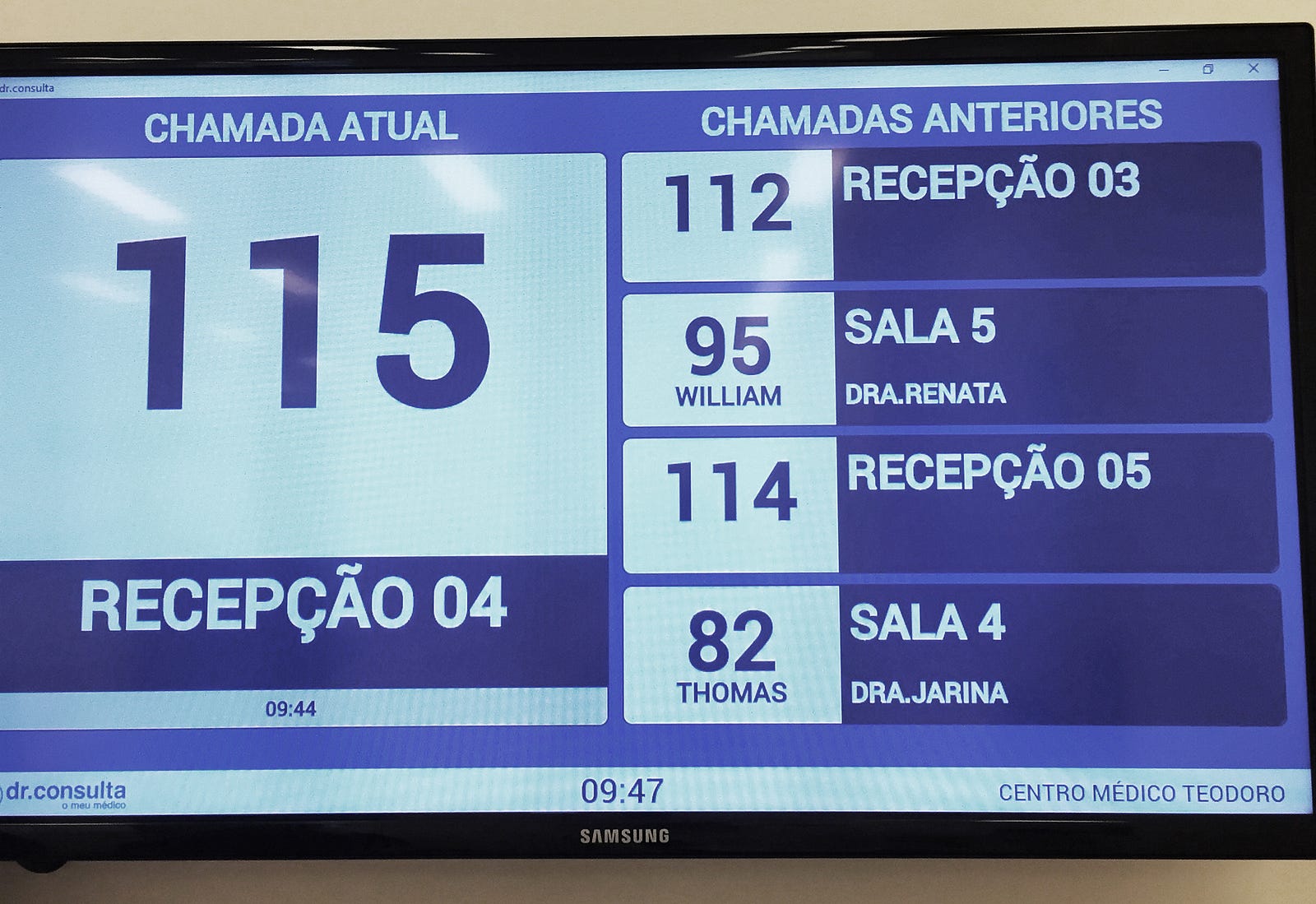 Foto: André Nogueira oct/2016
Foto: André Nogueira oct/2016
The doctors work part time, and they interact within a system that integrates their multiple agendas into a common interface. There is a standardized patient sheet to be filled at the beginning and at the end of every appointment designed with such clarity that another doctors are able to read the patients’ situation within 30 seconds. Even though the patient might have never seen that specific doctor before, the appointment starts in a trust atmosphere that is carried through the entire process of treatment.
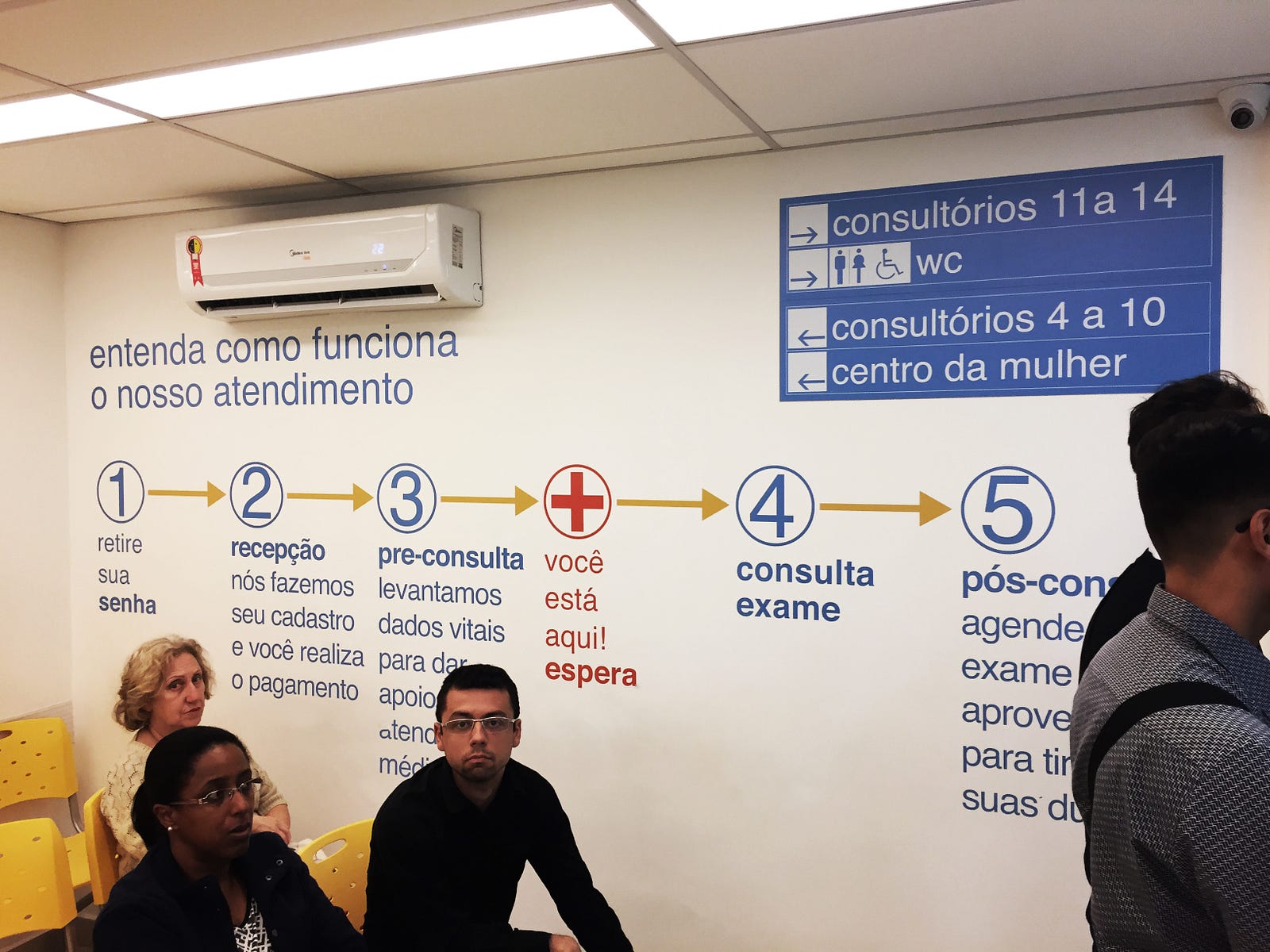
Another interesting point that was raised by one of the owners is the fact that their initial business plan was designed to attend only general and basic clinic services. As the customers were showing a positive acceptance, new demands quickly started to open spaces for expansion, bringing new technology and services into their business model. One of the reasons Dr. Consulta has been able to constantly adapt its platforms and systems is because of their comprehensive measurement process. They believe if you don’t measure it, you cannot control it, and therefore you cannot manage it.
They are flipping orthodoxies about affordance and great high quality services, and pushing the boundaries of design towards different forms of engagement. Yet, they are still struggling to communicate their vision and mission amidst the corrupt and unreliable government conditions — a context that limits the possibilities and openness for new engagement. One of their major challenges is the interface of communication and architecture design. Even though there is a sensibility inherent in the system, the clinics still look very functional and not very comfortable. There is potential to be explored between both conceptual and practical developments of spatial experience.
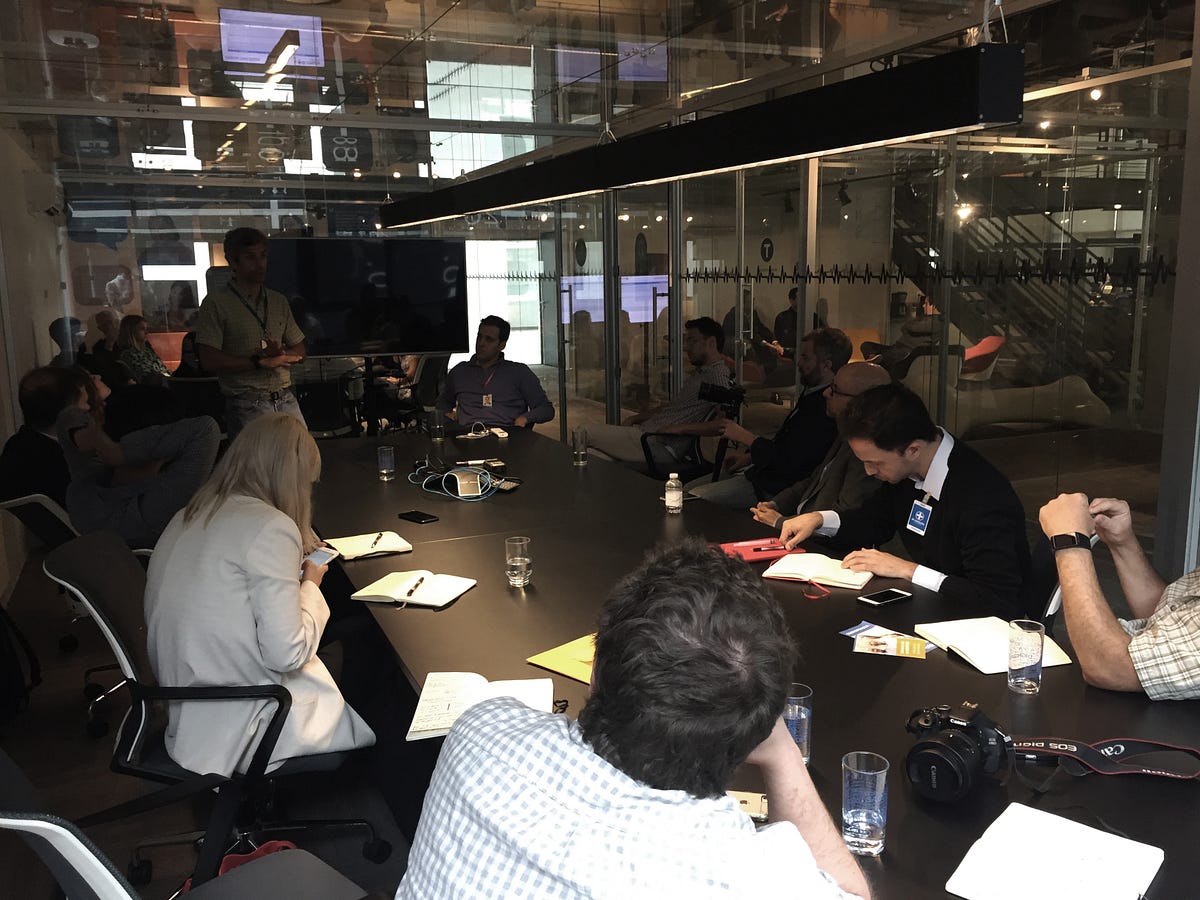
Currently Dr. Consulta is operating in 26 units, but with the plan to expand to 28 by the end of 2016. I have to admit, I was very impressed with what this 5-year-old company has offered by tackling a very bureaucratic sector with a lot of rigid boundaries.
Once the tour was over, we moved to their financial and administrative base. The contemporary architecture of the building, and the interior design of the company’s space tells a lot more about the values behind Dr. Consulta than the clinics, which left all of us with this question: why aren’t clinics incorporating this as well?
After an intensive immersion at Dr. Consulta, we were energized and ready to move forward. Coincidently, our next visit was in the same building. Back to the ground level and up again: we were in NuBank.
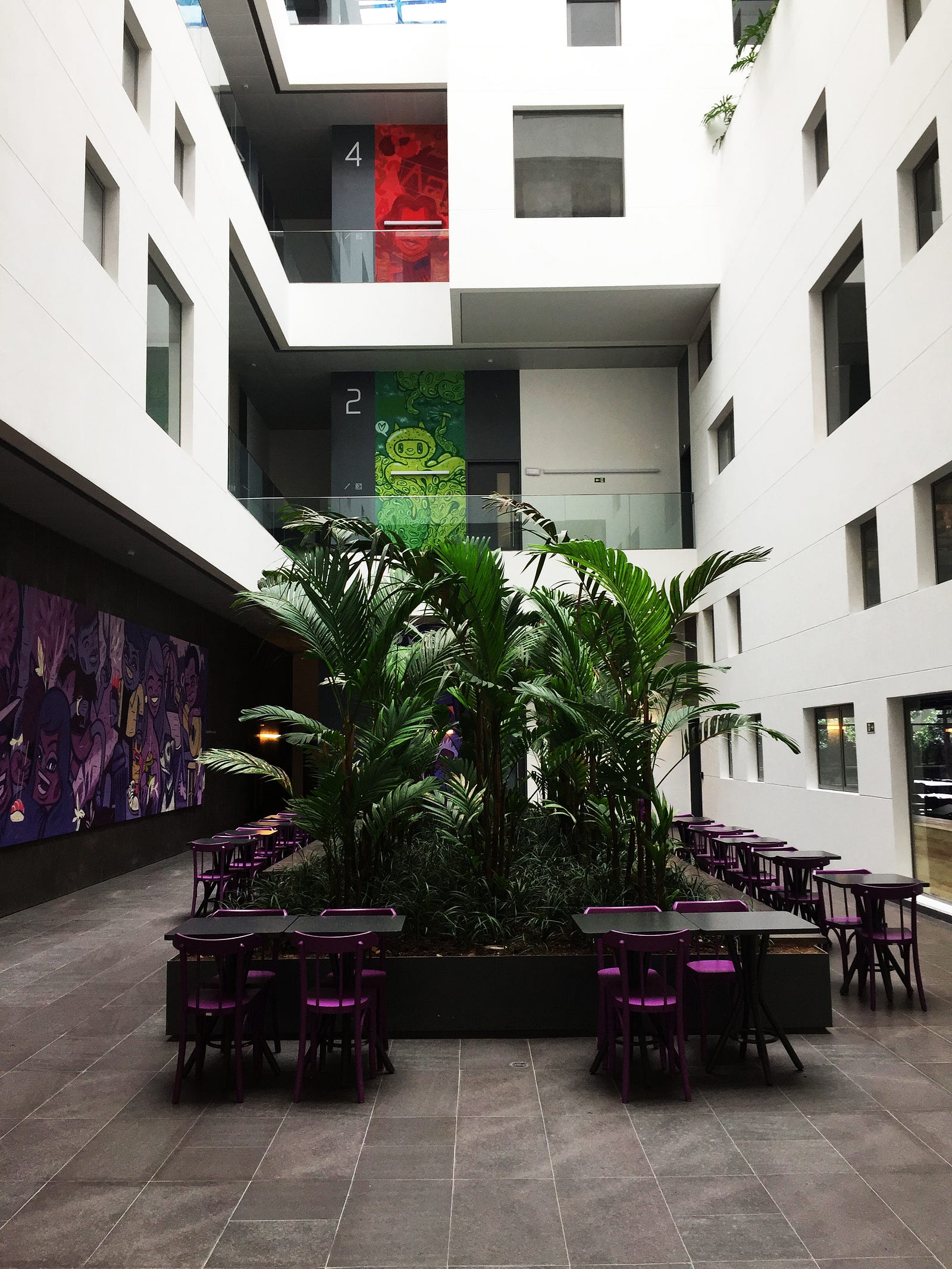
NuBank is a startup that is disrupting the financial credit services of Brazilian companies. Fighting complexity and bureaucratic processes to empower people’s choices and possibilities, they are offering efficiency and creating sophisticated relations through simple solutions. Many of them come from leveraging existing platforms (e.g. WhatsApp, e-mails, etc.) or even adopting trends into the industry (e.g. paperless, transparency, human-centric design, etc.), but applied in an industry that always seemed so complex and bureaucratic.
The startup offers a credit card with low barriers of entrance and high level of fidelity. By integrating design and customer experience with technology and data science, they were able to drive attention from forward thinkers and investors with an open-minded future perspective approach. They started targeting the high middle class, and now they have reached the elite as well.

NuBank is becoming a reference for many other banks and services, even internationally. And with that, greater responsibilities come along. Despite their product offering and “alternative” way of doing business (from customer interaction to internal organization design and culture), the company has not yet reached their potential for sustainable development. When questions related to the topic came along, the answers touched only on packaging and internal social inclusion. They claimed sustainability by having diversity of gender, race, ethnics and age, and by trying to minimize the waste of their package. This is a very limited perspective, and relies on the assumption that sustainability is a close-ended activity that either you do, or you don’t, instead of a process. Sustainability can be seen as a great challenge to tackle and incorporate into their product and services.
So much had happened and we were only half way through the day. My mind was already working at its full capacity, moving from past experiences, potential of design capabilities, consequence systems, current social challenges to innovation processes, and the role design is assuming the world. All of that with a frustration associated with the lack of knowledge in sustainable development.
Looking at the companies that are ahead of innovation in my country made me realize that so much has changed in the past decades. I was constantly analyzing not only the companies we had visited so far, but also many of the companies I have worked in or with. Seen from this perspective, I realized that the design field still lacks the knowledge and capability to face complex challenges in a sustainable and ethical way. This perception started to become more evident as we were moving from one disruptive example to another.
The quiet lunch was a moment to breathe and reflect. People were having conversations and expressing their opinions. The intensity resulted from the exposure we had to critical challenges that the companies are facing with bravery. Whenever unexpected consequences of daily choices are revealed as major challenges of society, and in such short period of time, it is hard not to think about personal decisions. We started to question ourselves: What are we going to do with the things we created and with the things we are still creating?
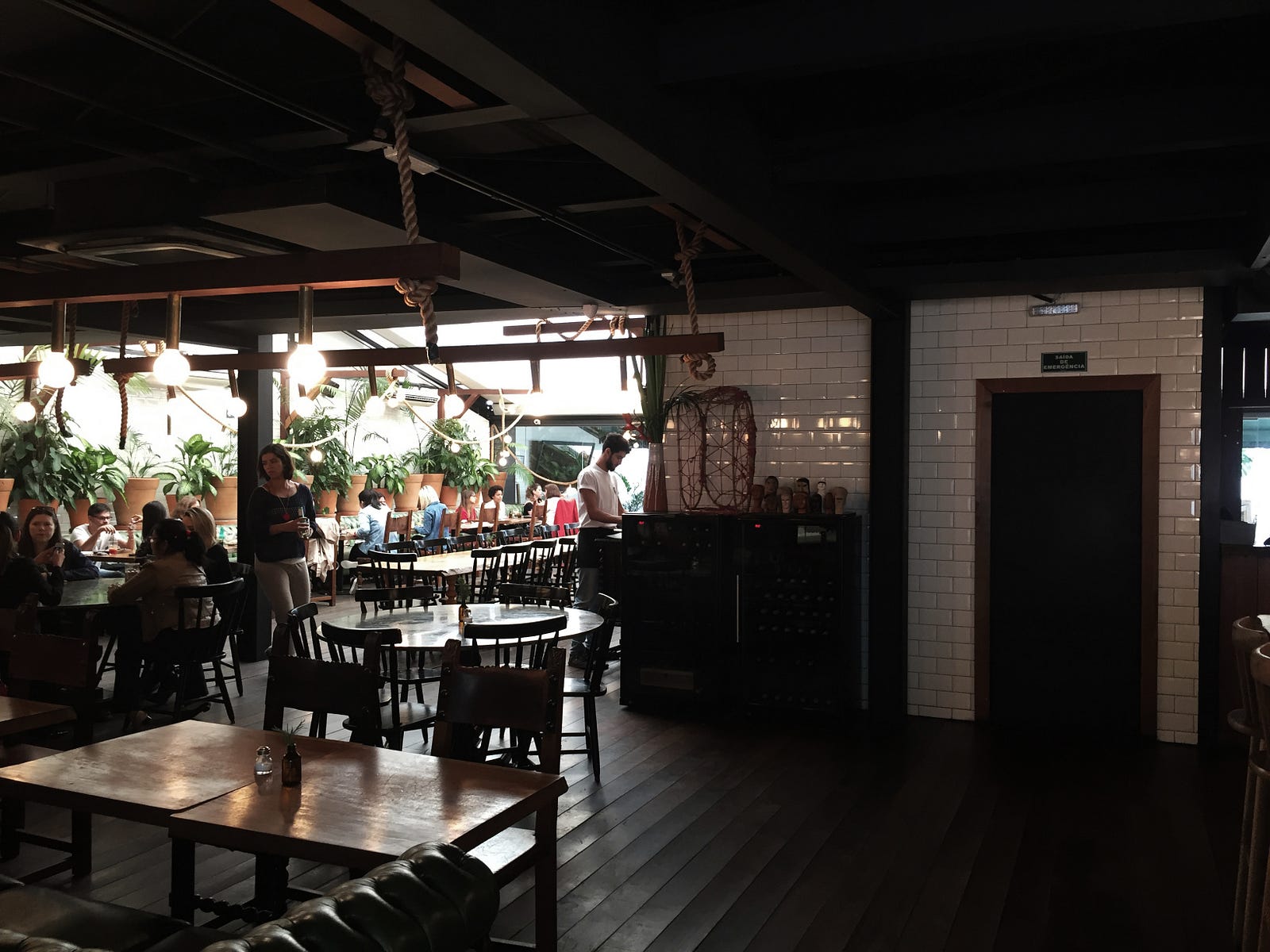
I don’t know if others felt this way or not, but lunch wasn’t enough time to reflect on this moment. We had to take a 15 minutes’ walk around the neighborhood, and breath some fresh air, see other things, just do stuff. When walking, good laughs started to come into the scene, and ready or not, we had to move on. Next stop: Jeitto.
Jeitto is an app for social innovation. They offer a low barrier of entry to an alternative way of getting a loan and making a payment. Based on day-by-day continuous observation, Jeitto developers are intensely diving into their customer’s context and conditions. With eyes and ears open, the organization is still in a prototyping phase, trying to explore the best form of engagement, learning and teaching financial education.
The public debt of Brazil is very high and the level of credit is very low. The internal debt rises daily as the governments spend more than they can collect. Such context makes it even more challenging for innovation to financial services such as this one. Difficult tasks yet to be overcome also requires exploration of ethical concerns. The line that separates the fair and the honest interest rates from the exploitive and unethical ones is still undefined, and it is continuously being questioned by many other initiatives that have no other intention than explore such conditions in a highly profitable way.
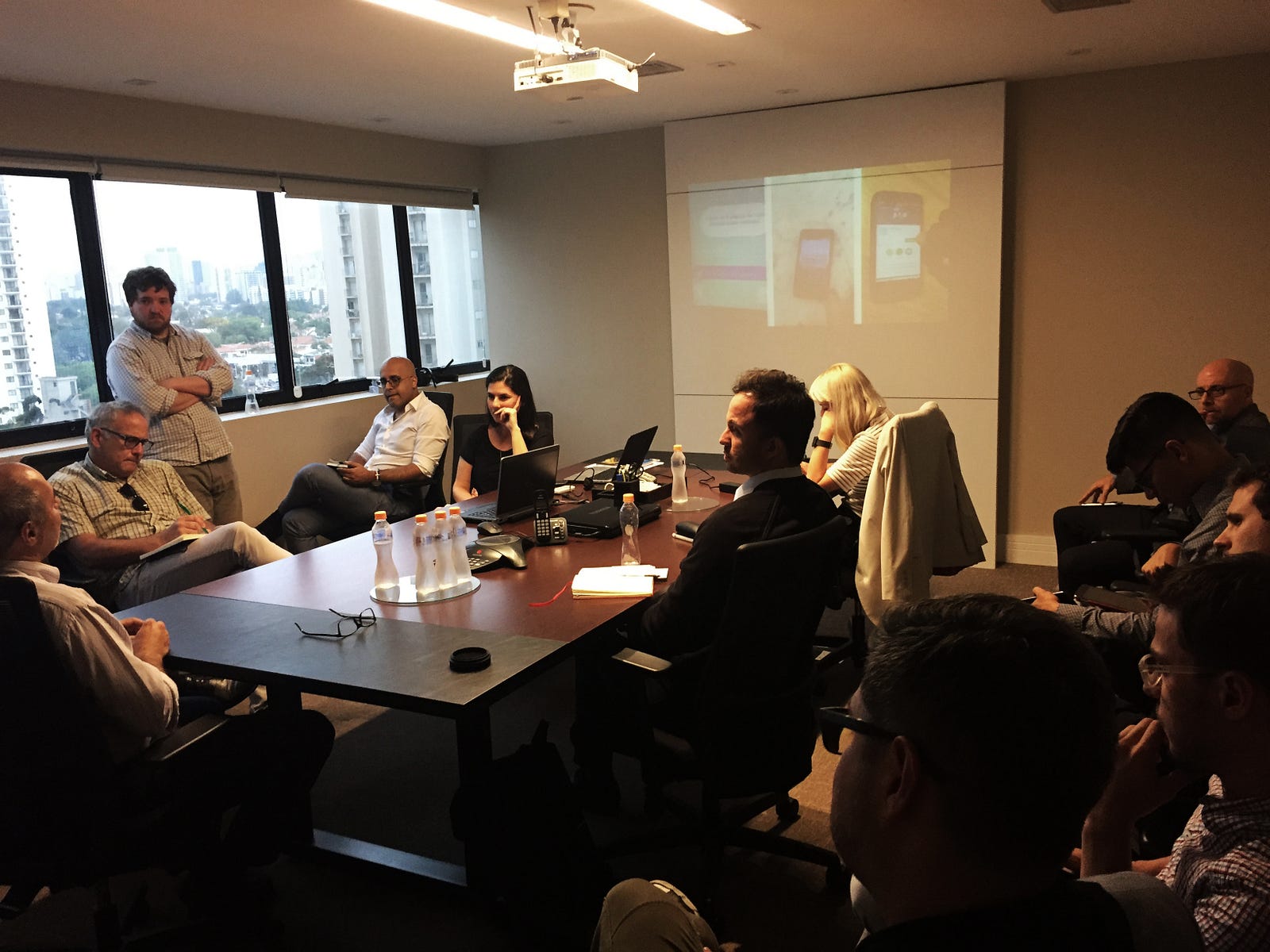
Jeitto has an interesting perspective of continuous experimental approach that is leading to an exciting learning environment for the company and many other institutions trying to understand better ways of engaging in the context. Their major challenge is how to develop a system with an interface that is able to dialogue with a majority illiterate target user. At the moment, they are training the sales team and developing a simple and accessible language, based on creating trustworthy interactions.
They want to foster new ideas by offering an accessible way to leverage their customer’s needs. For now, they realize that as long as they keep transactions to small amounts of money, they can manage and navigate people consistently through their system. Under such conditions, they define themselves as a service platform with a potential to become a financial education support tool, and that’s when design came along.
For them, this greater value would be only achieved through design capabilities. Jeitto’s founders have had previous experience working with designers, and understand the value of design. They feel that there is no way to develop a startup without design. Therefore, they have had designers working with them since the beginning, and followed design strategies and processes all throughout their journey. Jeitto believes design is essential to develop empathy and understand real needs, as well as a way of learning faster and increasing success by creating a meaningful solution.
As we were in this meeting room, we all started to get more anxious about the Brazilian reality, and I could see in people’s expression their willingness to do something to improve it. Questions from current conditions, past context, and future goals were popping up, and the conversation went to different challenges within Brazilian culture. It was very interesting seeing the curiosity among participants when facing a reality far from what they are used to.
While there, a strong rain started to fall. For one moment I felt it would ruin our travel plans to the next stop, but then I thought: “Well, in a certain way, I am glad this is happening. Mobility in the city becomes even more challenging when it is raining, and hopefully that is another experience for our team them to learn.”
Jeitto’s meeting room was only 5 blocks away from our next stop. We had planned to walk from one place to another. Within 30 minutes of rain, we could see floods on the street, understand how badly maintained and inaccessible the sidewalks are designed, and suffer from the poor quality of our public electric system. Waiting on the rain, we were comfortable in extending our conversations for 10 more minutes. Once it stopped, we started to move towards CUBO, an incubator and co-working space from ITAU that is supporting a lot of interesting new business models.
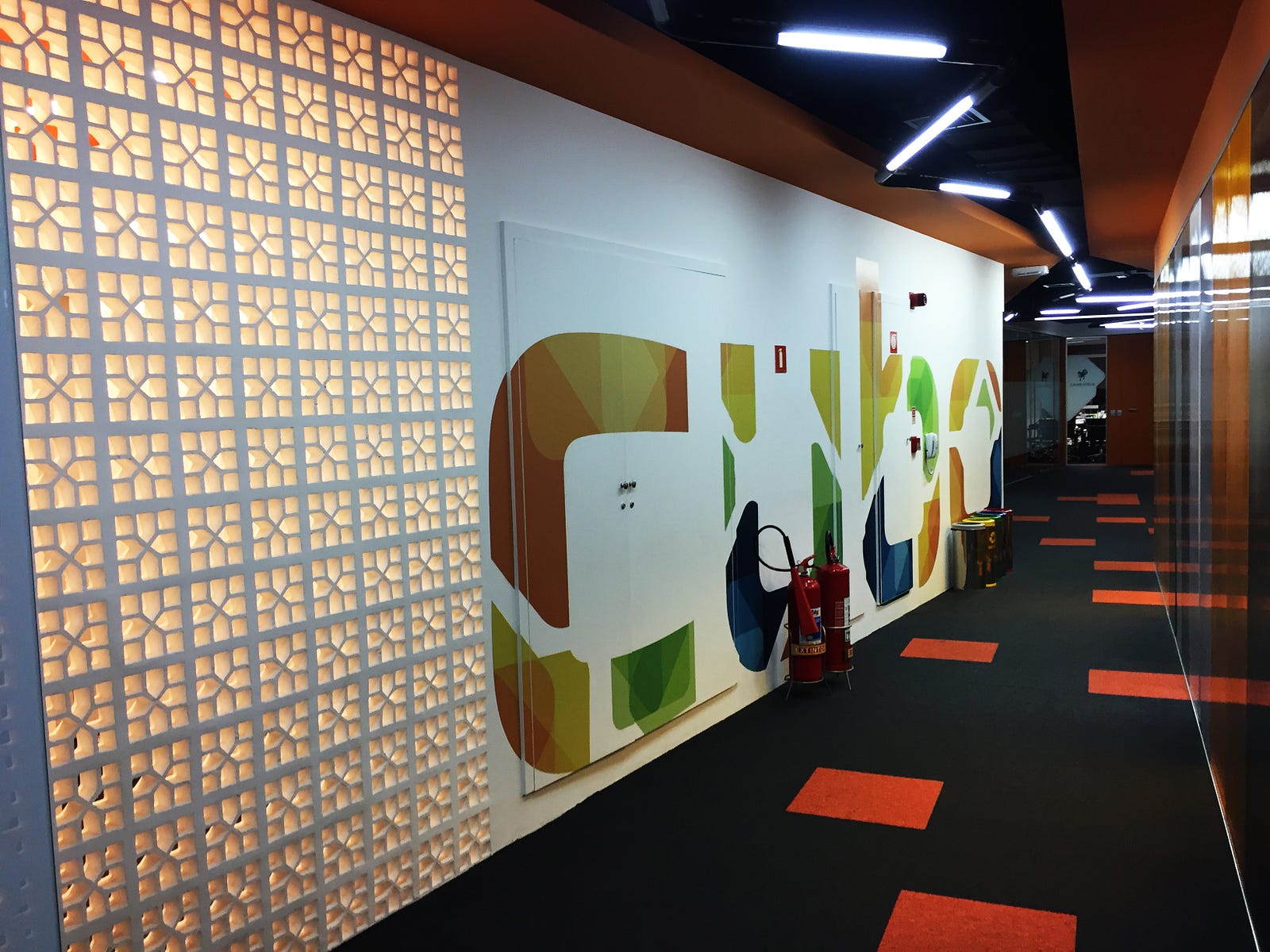
When ITAU recognized their organization limitations to generate innovation in the same intense, fast, and diverse way that many startups were doing, they created CUBO. The bank’s investment relies on the understanding that innovation comes from small initiatives, and they needed to find a way to incorporate this contemporary condition into their company’s culture. Even though it is not literally inside of the company, ITAU does benefit just by being close to it.
The way the system works is just like a common co-working space, but there is a recruiting and selective process in order to be part of it. The infrastructure they offer is pretty amazing. Nice, comfortable, colorful, contemporary, alternative. The creative, well-designed environment produces innovation mindset just by being there. People are smiling and talking all the time. Post its, white boards, and prototypes are all over. There are social gathering spaces and cafeterias. Everybody knows each other’s work, and they collaborate as a community.
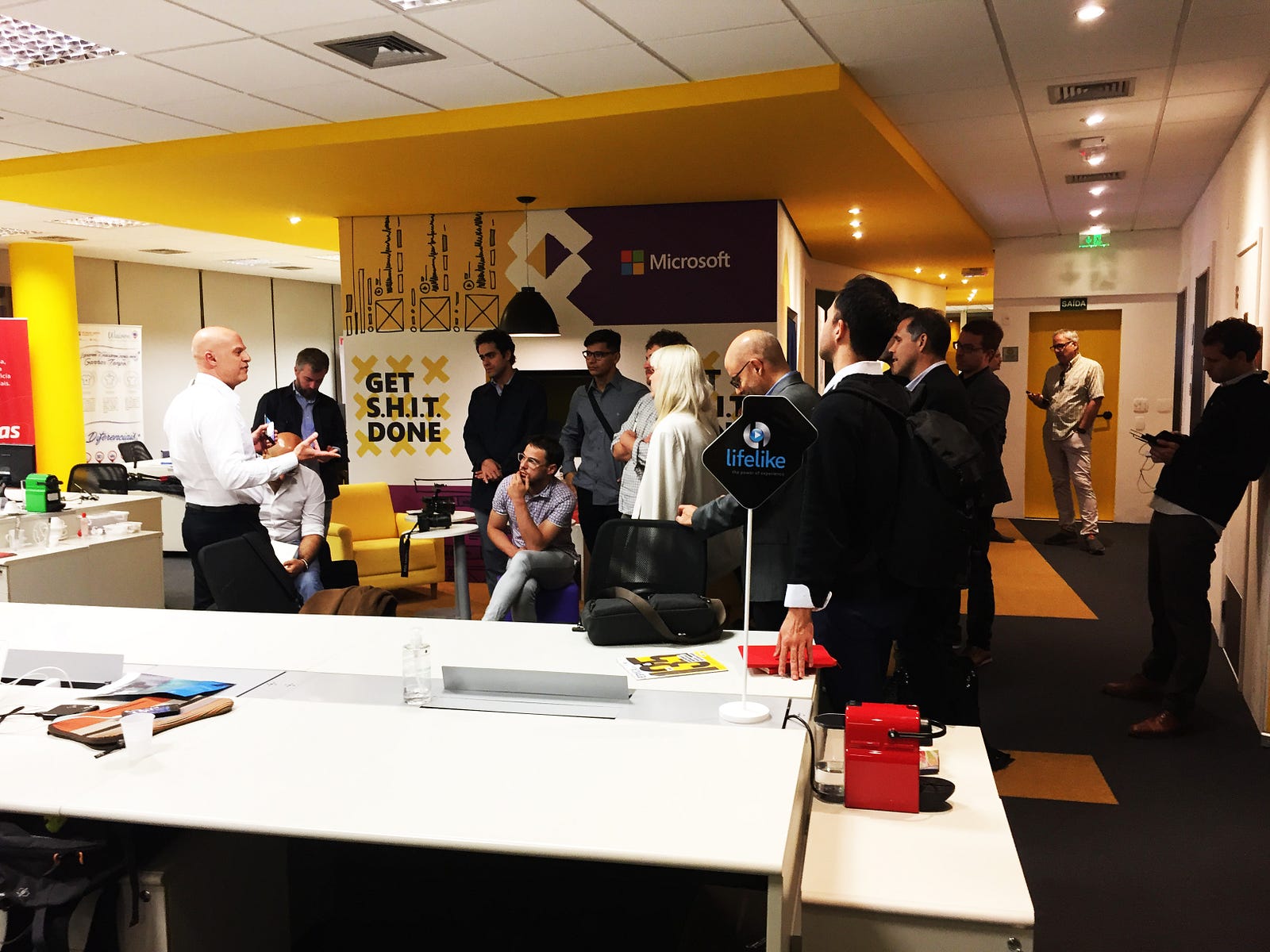
Every week Venture Capitalists come in to talk to the startups, offering them advice, money, and experience. The energy flows in this perfect scenario for the bank innovation and knowledge development. CUBO became a trampoline for innovation and the source of it for ITAU.
After visiting all of the facility, we all gathered in the auditorium for an amazing panel discussion on “Adaptive Growth”. As a facilitator, Professor Carlos Teixeira explained the importance of understanding the context and condition in which innovation is happening. The conversation started with the contribution of designers in the process, and the discussion went on. The panel members were Bruna Chianca, head of customer experience at Jeitto, Luis Arnal, co-founder of Insitum, Roberto Martini, founder of FLAGCX, and Manoel Lemos, partner of RedPoint eventures. I felt very lucky to be there and to hear their perspective towards innovation.
They discussed the diversity of business, services, and products. They argued a lot about the scale and impact of innovation, and how the current business models are not satisfying the contemporary challenges on either a local or global scale. They also talked about how the specialization of services is leading to oversized companies that are not efficient anymore. From there, the discussion went to new ways of interacting and new forms of communication, which led us to the topic of pivoting and the capacity of adapting.
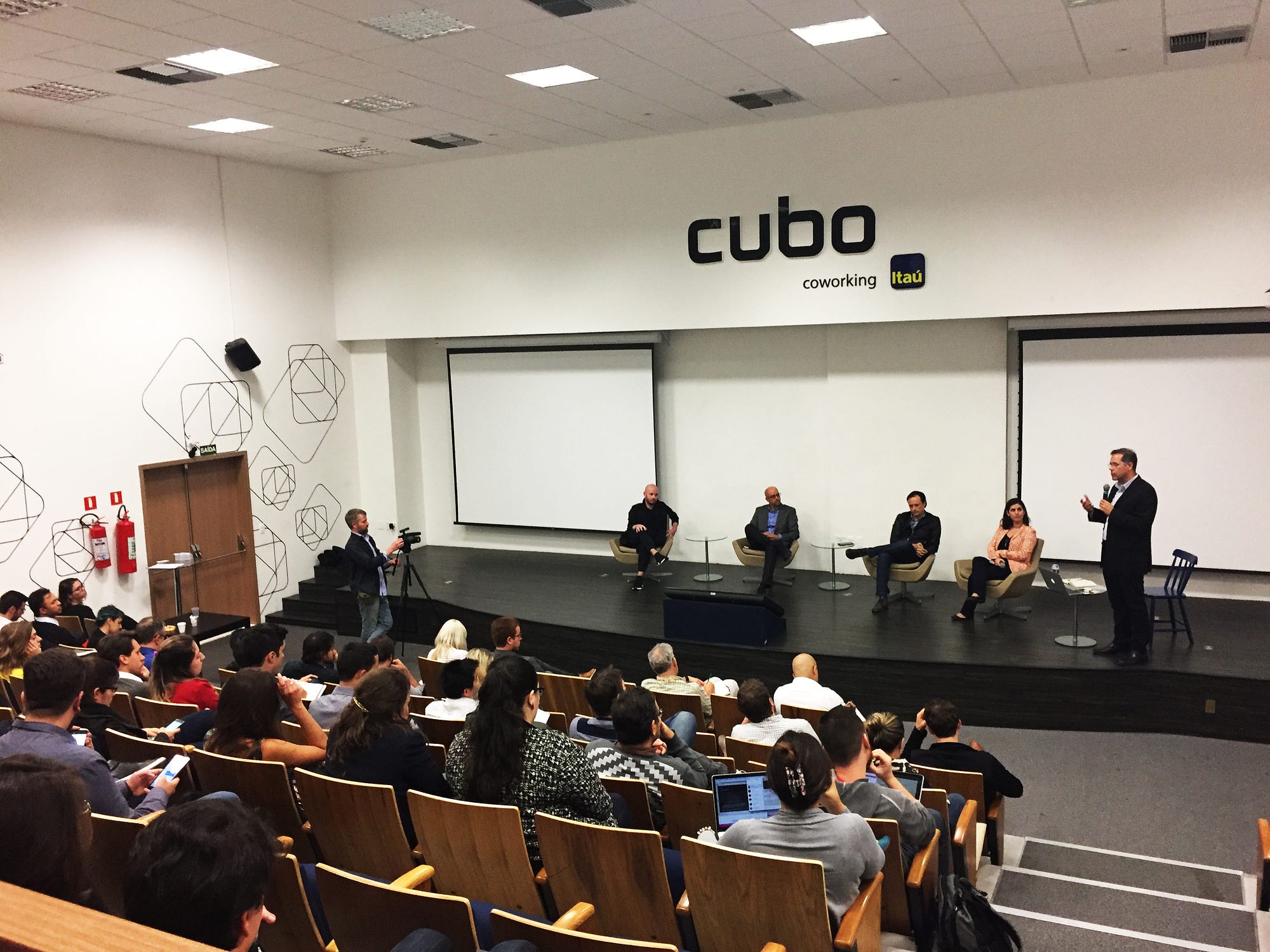
Another important subject was the data science, and the lack of capability to use information in a proper and ethical way. With that said, the notion that design can solve problems and kill a new problem was the starting point to enter the education challenge. The panel was intensively arguing that design schools are not developing the capability of system thinking in their students’ learning process. Complimentary to the learning of design methods, processes and tools, students need to be more exposed to social sciences and philosophy. By doing so, they might be more prepared to better contribute to new positions they are assuming.
Inevitably, the topic of contemporary trends of disruptive models that are building trust between companies and customer deviate the panel attention towards open innovation processes. By bringing more transparency and less bureaucratic systems of engagement, companies are enabling their customers to engage in more ways than they ever did before. Opening and sharing their processes is way to say, “I have nothing to hide from you, and I am open to your contributions,” which is currently a major need in order to succeed in the Brazilian context.
This was the perfect way to end the day. No dinner tonight, no social gathering, no energy. We all needed to rest. Everybody went directly to the hotel, and I went home. Different from the first day, I was in an intensive reflexive mood, trying to figure out this new definition of home I had found in myself. Leaving the country for a couple months and coming back with new lens made me realize the potential of transformation the Institute of Design had in my understanding of the world. As I laid my head on the pillow, I was trying to find a common meaningful approach to the systems we are creating and the results we are generating with so many unexpected consequences. Is there a way for designers contribute while considering consequences in order to guide decision-making process of innovation? All of the companies we visited were from the private sector, and my concern at that moment was about the public sector. What is the public sphere’s role this phenomenon that is happening?
